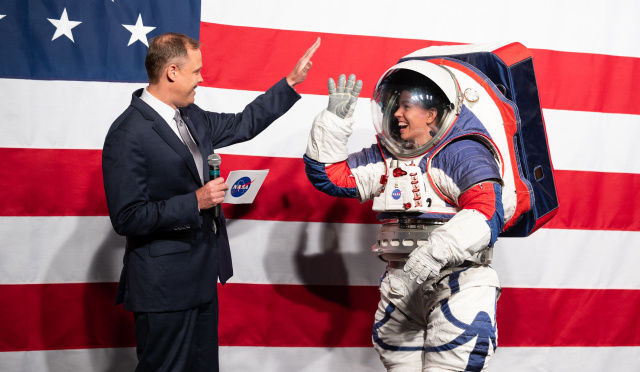$420 million has already been spent on the program
WASHINGTON, August 23. /TASS/. A number of members of the House of Representatives of the US Congress expressed dissatisfaction with the fact that the US space agency delayed the creation of new spacesuits that should be used for flights to the Moon and Mars. This was reported on Monday by the UPI news agency, in an interview with which the chairman of the House Subcommittee on Space and Aeronautics, Don Bayer, said that he intends to hold hearings in order to get explanations from the leadership of NASA.
"We will schedule such hearings before the end of the year," the agency quotes him as saying. - We have already spent $420 million on this program and have no idea what the results will be. Congress should take control of this."
As Bayer noted, according to some experts, the creation of spacesuits, in the end, may cost the treasury $1 billion. He recalled the report published on August 10 by NASA Inspector General Paul Martin, which indicates that due to delays in the implementation of the program, it seems impossible to land astronauts on the moon in 2024. "I do not know yet who we should blame for this, but we will figure it out," Bayer said. "It seems that the main problem is a lack of understanding of the technological tasks that should be set for designers."
"We will give the NASA management an opportunity to explain what problems they are facing," the agency quotes the opinion of another member of the subcommittee, Bill Posey. "NASA should create spacesuits that are cost-effective and safe."
Martin stressed in the report that the delays in the implementation of the program are due to technical problems, the consequences of the pandemic and insufficient funding from Congress. In October 2019, NASA presented a prototype of a new spacesuit, but, according to UPI, this year it admitted that it did not meet the requirements and on July 27 invited private firms to share their ideas and best practices. It is expected that in the autumn the space agency will announce the final technical requirements for the next-generation spacesuits.
NASA announced in the spring of 2019 that the program of landing astronauts on the Moon, called Artemis, includes three stages. The first is the launch of the Orion spacecraft into space at the end of 2021 with the help of a new Space Launch System launch vehicle, which will make several orbits around the Moon in an unpiloted mode and return to Earth. The second is a flyby of the Earth's natural satellite with a crew on board, which is planned for 2023. In the third stage - in 2024 - NASA expects to deliver astronauts to the Moon, and then send them to Mars in the mid-2030s.

